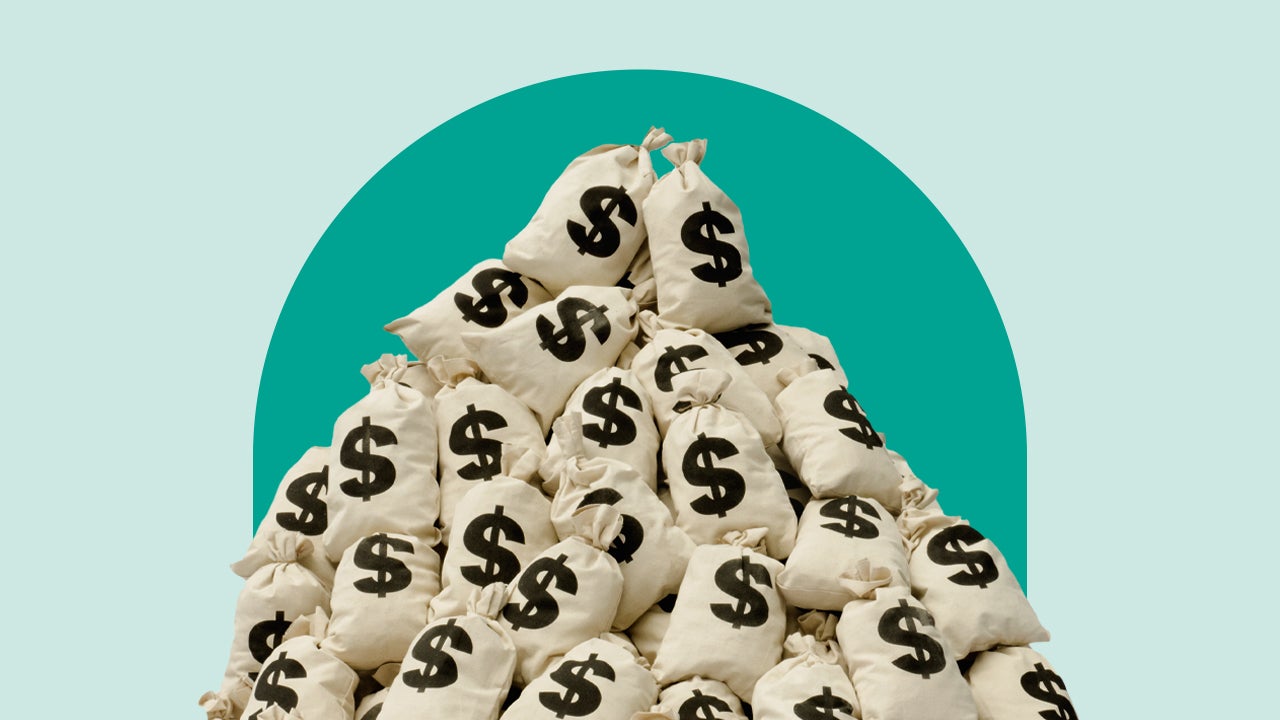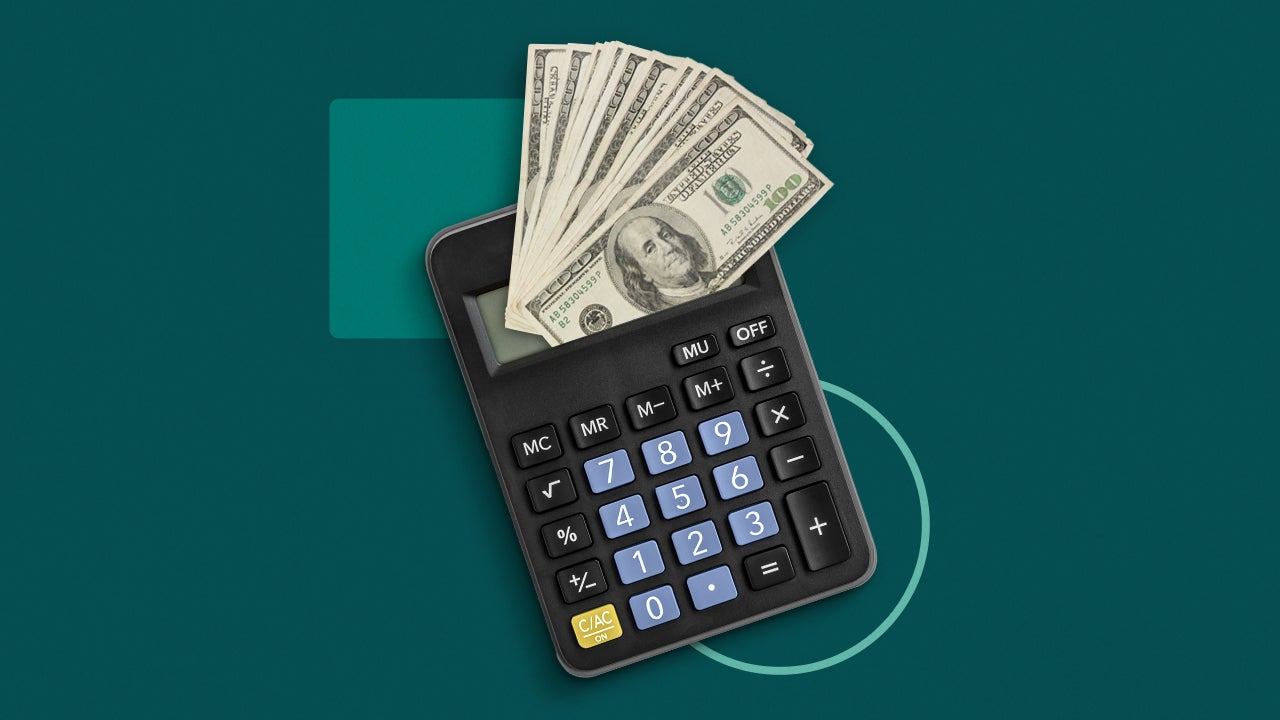What is a personal loan?




Key takeaways
- A personal loan is money you can borrow in a lump sum with a fixed payment to finance large purchases, consolidate debt, invest in yourself or cover emergency expenses.
- Interest rates, monthly payments and repayment terms vary based on creditworthiness, income and other factors.
- You’ll get the best loan terms if you improve your credit score and reduce your debt-to-income ratio before applying.
A personal loan is a type of installment loan with a fixed rate and monthly payment. You receive a lump sum after approval and can use your loan for nearly any purpose. People often choose personal loans because they feature lower interest rates than credit cards, and you generally receive your funds funds two to three days after approval.
You can find personal loans from online lenders, banks, credit unions and through a marketplace like Bankrate. Before taking one out to cover a sudden expense or large purchase, consider the ins and outs of this funding option.
How do personal loans work?
A personal loan works a lot like an auto loan. You borrow money from a lender and pay it back in equal payments over a term of up to seven years. However, unlike a car loan, most personal loans are unsecured. You don’t need any collateral for approval. Because personal loans aren’t secured, you qualify primarily based on your credit score and debt-to-income ratio.
Lenders advertise loan amounts between $1,000 and $100,000, and average personal loan rates currently range from about 11 percent to 32 percent. You will need excellent credit and a high income to qualify for the lowest rates and highest loan amounts. And while some lenders offer bad credit personal loans, prepare for less favorable terms.
The application process can take anywhere from a few hours to several days. Once you’re approved, the lender will disburse your loan funds into your bank account. From there, the repayment process generally begins within 30 days following approval. Lenders generally report account activity to credit bureau, so making timely payments can help you boost your credit score.
What can a personal loan be used for?
There are a variety of reasons to get a personal loan, and personal loans can be used for almost any legal purpose. Some lenders may restrict you to only unsecured options, while others may allow you to secure a personal loan with an asset, like a car or boat. Overall, personal loans are a good choice for big expenses and large purchases that you can’t fund with savings or a credit card.
Debt consolidation
Debt consolidation loans may help you save money on interest by combining high-interest credit cards and any other debt you have into a single personal loan. It can also help simplify a complicated bill-paying schedule since you replace several bills with one new loan and payment.
If you pay off your maxed-out credit cards, you could see a big boost in your credit score, since you’ll lower your credit utilization ratio. You’ll also pay off your debt much faster than making the minimum payments on a credit card.
The author's expert insights
Paying for emergency expenses
Same- or next-day funding times make emergency personal loans a great option for financial emergencies, such as surprise medical bills, a leaky roof or even funeral expenses. And since most personal loans don’t have a prepayment penalty, you can pay the balance off early after you’ve recovered from the emergency.
Home improvement projects
Unsecured personal loans are approved faster than home equity products and don’t require putting your home up for collateral. If you have excellent credit, the rates may be lower than comparable home equity loans.
A personal loan can also be a wealth-building tool if you use it to make improvements that boost your home’s value. Just make sure you do your homework on what upgrades are increasing home values in your area before spending the money.
Financing life’s big events
Major life milestones like financing a wedding or dream vacation often come with high price tags. While these expenses are best covered by savings, a personal loan can be a good alternative to a credit card if you already know how much you need to spend.
It can also be a good alternative if you can’t get financing for an older used RV or boat. Because the majority of personal loans are unsecured, the vehicle isn’t part of the approval process, and you can buy and sell without having to worry about lien releases. Just remember that you may be paying off the bill for years to come.
How to qualify for a personal loan
A lender’s minimum and maximum annual percentage rate (APR) is influenced by the federal funds rate, among other factors. These rates change based on the market, but once you receive a rate, it is fixed for the loan’s term.
Your interest rate is based primarily on your credit score. If you have an excellent score, you may qualify for a lender’s lowest rates. The best rates typically go to people with credit scores above 800. Lenders may also consider additional factors, including:
- Income. Lenders like to see that you have a steady and reliable income source, like a salary or full-time hourly job, to prove you can make your monthly payments.
- Payment history. Lenders typically reward you with a lower interest rate if you’ve managed your credit without late payments.
- Debt-to-income ratio. If a high percentage of your income is already used to pay debts, lenders may charge you a higher rate to cover the risk that you might not be able to afford a new personal loan.
- Loan term. You may be offered a lower APR for a shorter term or charge a higher rate for longer terms. The lender knows the longer you have a loan, the more likely something could change in your finances that could make the payment unaffordable.
The author's expert insights
How to apply for a personal loan
Most lenders offer an online application experience to get personal loans. However, you may still be able to apply in person at a bank if you prefer face-to-face contact. Regardless of which option you prefer, the application process typically follows the same general steps no matter where you get a personal loan.
- Check the lender’s requirements. Check the websites of the bank, credit union or online lender you want to borrow from to get an idea of minimum credit scores, loan amount ranges and available terms. If you use a marketplace lender like Bankrate, you can review this information at a glance on one of our personal loan rate tables.
- Fill out an application. You’ll need to provide basic information about your income, credit score, current address and employment. Most lenders offer prequalification, so your credit score isn’t affected when you check your rate.
- Review the rates and terms. Depending on how strong your financial profile is, you may receive several offers with different rates and terms. Longer terms will typically come with higher rates, but lower payments. Watch for origination fees — they can be as high as 12 percent of your loan amount and are deducted when your loan funds.
- Apply with your final pick. Once you’ve chosen the lender you want to borrow from, you’ll finalize your application with a credit check and may need to verify your banking information. This is the point where the lender will do a hard inquiry, which may ding your credit score temporarily.
The lender may ask for a few more pieces of documentation before you get your loan. Expect to receive your funds usually within one business day by direct deposit. And remember: Any fees charged for the loan will reduce the amount you receive in your bank account.
Where can you borrow a personal loan?
The most common options when you need a personal loan are banks, credit unions and online lenders.
- Banks. Your local bank may be a good starting point for a personal loan. However, banks typically set strict approval requirements, including needing an excellent credit score and strong financial profile. The lowest rates typically go to borrowers who choose 3-year terms.
- Credit unions. It may be slightly easier to get approved for a personal loan from a credit union, and rates may be lower than with banks and online lenders. You’ll need to be a member, and some credit unions require you to bank for a set number of months before you are able to apply for a loan.
- Online lenders. You’ll find more options if you have fair to bad credit with online lenders. Some may specialize in large loans — up to $100,000 — with competitive rates if you have excellent credit. But unlike banks and credit unions, online lender fees can be over 10 percent of your loan amount, depending on your credit score and other factors.
- Marketplace lenders. A marketplace like Bankrate lists multiple lenders it partners with in one spot. This allows you to quickly review terms rather than searching each lender’s website individually. It can be a good platform if you’re not sure what you qualify for and want to get feedback from several different lenders.
Bottom line
If you need to borrow money and prefer the stability of a fixed monthly payment, a personal loan could be exactly what you need. To get the best loan rates and terms, improve your credit and pay down existing debt to get the most competitive loan rates and terms. It’s also important to shop around and compare personal loan rates with multiple lenders in the personal loan space, including companies that offer online loans.
Frequently asked questions
Why we ask for feedback Your feedback helps us improve our content and services. It takes less than a minute to complete.
Your responses are anonymous and will only be used for improving our website.








